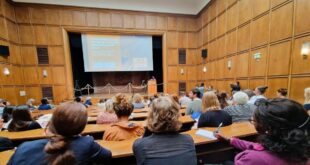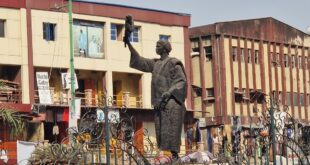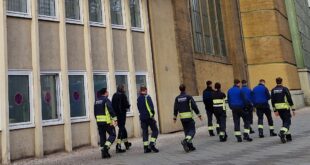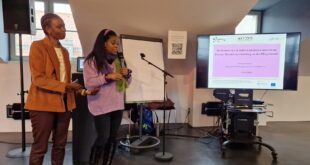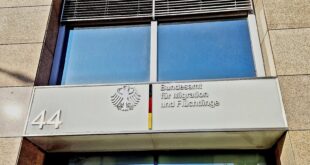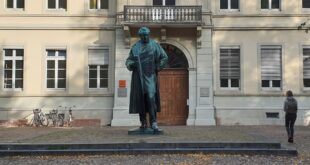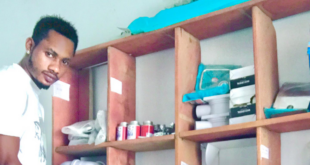A battery of new technological innovations has been unveiled by Germany’s refugee agency to help it determine more accurately the country of origin of asylum seekers and detect those who make multiple applications using different names. Jefferson Chase reports.
No more Franco A.’s – that’s the motto at the Federal Office for Migration and Refugees (Bundesamt für Migration und Flüchtlinge or BAMF). The case of the Bundeswehr soldier and alleged right-wing extremist who successfully passed himself off as a Syrian refugee was a major embarrassment for the BAMF last year. But officials say a new battery of identification technology publicly presented last week will prevent any repeat of that sort of fiasco.
“Language biometrics”
The centrepiece of the new gear is the so-called “language biometrics” software capable of analyzing dialects as a way of determining an individual’s true place of origin. Officials claim that it is one of a kind in the world.
“To state the matter clearly, with it, we would not have had Franco A.,” said the government’s refugee management commissioner Frank-Jürgen Weise at the unveiling ceremony. “We would have recognized that this sort of French isn’t spoken in Damascus. And we could have asked him: Why are you telling us this?”
“It’s completely new and state of the art – the most modern technology available,” said BAMF information technology head Markus Richter.
Other new technology includes software for comparing biometric photo images of asylum seekers – in the past, a handful of refugees have registered multiple times with authorities and collected multiple benefits.
And there’s a computer program for transcribing Arabic names into Roman lettering in standardized form – transliteration confusion became a problem in the case of the Christmas market bomber Anis Amri, who was known in Germany by a variety of names.

Speeding up asylum decisions
The technology was tested at the BAMF Arrival Centre in Bamberg, which handles new asylum seekers for the state of Bavaria. Proponents are keen to see it used nationally.
“I expect the technology to be introduced quickly to all of Germany’s 16 federal states and recommend that my fellow interior ministers adopt the experiences of the model project in Bamberg,” said Markus Ulbirg, the Interior Minister of Saxony and the chairman of the German interior minister conference.
The new technology is part of an integrated biometric identification using so-called “personalization infrastructure components” that included fingerprinting. The BAMF is keen to present it as a way of preventing abuse of the system and streamlining the asylum decision-making process in the interests of both accepting and turning away would-be refugees.
“By making quick asylum decisions, the Federal Office can help improve the process of returning people,” BAMF President Jutta Cordt said.
At present, decisions on asylum cases take far longer than the official government target of three months. Applicants go through lengthy interview processes with so-called “deciders,” who pepper them with questions about the places they say they’re from and their identities in an effort to uncover inconsistencies.
Authorities hope better IT will speed up the process, but critics are sceptical.

Nonsense or additional information sources?
Detractors doubt whether the new technology will do anything to combat the shortcomings in the system that became evident in the cases of Franco A. and Amri, whose asylum application had already been rejected when he launched his attack.
“[In the case of Amri] it wouldn’t have made a difference,” the data policy spokesman of the Pirate Party, Frank Herrmann, told DW back in May. “As for Franco A. – he never even spoke Arabic, only French. It’s really nonsense, this software.”
Worries have also been raised about the quality of the language recognition software. It’s related to that used in the banking sector, which has often been criticized for being prone to mistakes.
Proponents say the new technology is intended to supplement, not replace human evaluation.
“We call these things ‘assistance systems’ for a good reason,” Weise said. “So that it’s clear that they give deciders indications that they should question a given individual more thoroughly.”
“Like all the tools, the language recognition software is an additional source of information that can be used to uncover inconsistencies,” Richter concurred. “It’s important to stress that tools are only an aid for the deciders.”
In any case, the time required to process asylum applications should drop on its own as fewer and fewer people try to get into Germany. On 26 July, the BAMF said 90,400 people had arrived in Germany in the first half of this year. That’s well down from the 226,058 in the first six months of 2016.
© DW
 THE AFRICAN COURIER. Reporting Africa and its Diaspora! The African Courier is an international magazine published in Germany to report on Africa and the Diaspora African experience. The first issue of the bimonthly magazine appeared on the newsstands on 15 February 1998. The African Courier is a communication forum for European-African political, economic and cultural exchanges, and a voice for Africa in Europe.
THE AFRICAN COURIER. Reporting Africa and its Diaspora! The African Courier is an international magazine published in Germany to report on Africa and the Diaspora African experience. The first issue of the bimonthly magazine appeared on the newsstands on 15 February 1998. The African Courier is a communication forum for European-African political, economic and cultural exchanges, and a voice for Africa in Europe.





